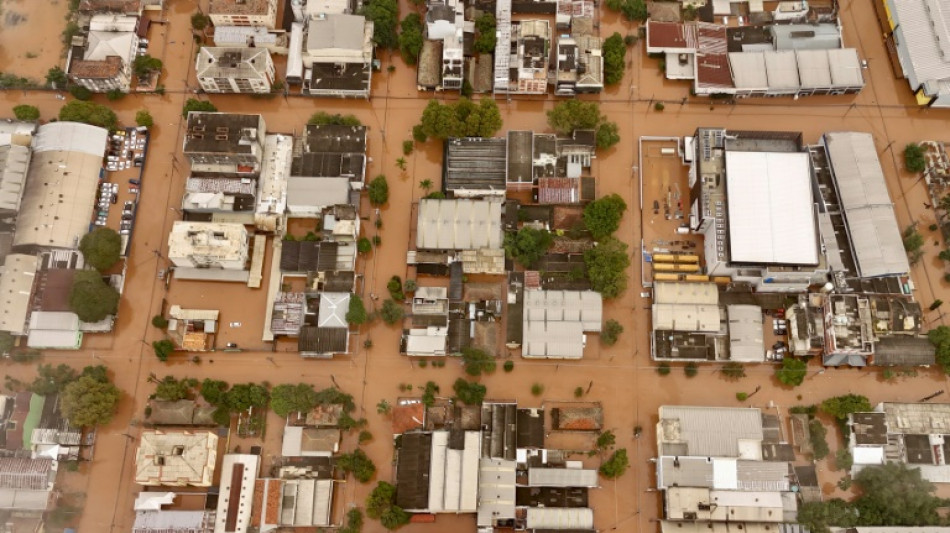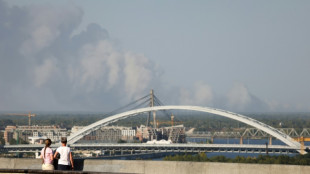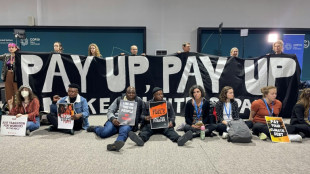

Race against time to rescue Brazil flood victims after dozens killed
Authorities were racing against time on Sunday to rescue people from raging floods and mudslides that have killed more than 50 and forced nearly 70,000 to flee their homes in southern Brazil.
Viewed from the air, Porto Alegre, the capital of Rio Grande do Sul state, is completely flooded, with streets waterlogged and the roofs of some houses barely visible.
The Guaiba River, which flows through the city of 1.4 million people, reached a record high level of 5.09 meters (16.9 feet), according to the local municipality, well above the historic peak of 4.76 meters that had stood as a record since devastating 1941 floods.
The water was still advancing into economically important Porto Alegre and around a hundred other localities, with increasingly dramatic consequences.
In addition to some 70,000 residents forced from their homes, Brazil's civil defense agency also said more than a million people lacked access to potable water amid the flooding, describing the damage as incalculable.
The agency put the death toll at 55, although that did not include two people killed in an explosion at a flooded gas station in Porto Alegre that was witnessed by an AFP journalist.
At least 74 people are also missing, it said.
Rosana Custodio, a 37-year-old nurse, fled her flooded Porto Alegre home with her husband and three children.
"During the night on Thursday the waters began to rise very quickly," she told AFP via a WhatsApp message.
"In a hurry, we went out to look for a safer place. But we couldn't walk... My husband put our two little ones in a kayak and rowed with a bamboo. My son and I swam to the end of the street," she said.
Her family was safe but "we've lost everything we had."
- 'It's terrifying' -
The rainfall eased Saturday night but was expected to continue for the next 24-36 hours, with authorities warning of landslides.
Authorities scrambled to evacuate swamped neighborhoods as rescue workers used four-wheel-drive vehicles -- and even jet skis -- to maneuver through waist-deep water in search of the stranded.
Rio Grande do Sul Governor Eduardo Leite said his state, normally one of Brazil's most prosperous, would need a "Marshall Plan" of heavy investment to rebuild after the catastrophe.
Long lines formed as people tried to board buses in many places, although bus services to and from the city center were canceled.
The Porto Alegre international airport suspended all flights on Friday for an undetermined period.
President Luiz Inacio Lula da Silva posted a video of a helicopter depositing a soldier atop a house, who then used a brick to pound a hole in the roof and rescue a baby wrapped in a blanket.
The speed of the rising waters unnerved many.
"It's terrifying because we saw the water rise in an absurd way, it rose at a very high speed," said Greta Bittencourt, a 32-year-old professional poker player.
- 'Going to be much worse' -
With waters starting to overtop a dike along another local river, the Gravatai, Mayor Sebastiao Melo issued a stern warning on social media platform X, saying, "Communities must leave!"
He urged people to ration water after four of the city's six treatment plants had to be closed.
Leite, the governor, said in a live transmission on Instagram the situation was "absolutely unprecedented," the worst in the history of the state, which is home to agroindustrial production of soy, rice, wheat and corn.
Residential areas were underwater as far as the eye could see, with roads destroyed and bridges swept away by powerful currents.
Rescuers faced a colossal task, with entire towns inaccessible.
At least 300 municipalities have suffered storm damage in Rio Grande do Sul since Monday, according to local officials.
- 'Disastrous cocktail' -
Roughly a third of the displaced have been taken to shelters set up in sports centers and schools.
The rains also affected the southern state of Santa Catarina.
Lula, who visited the region Thursday, blamed the disaster on climate change.
The devastating storms were the result of a "disastrous cocktail" of global warming and the El Nino weather phenomenon, climatologist Francisco Eliseu Aquino told AFP on Friday.
South America's largest country has recently experienced a string of extreme weather events, including a cyclone in September that killed at least 31 people.
A.Cantu--LGdM




